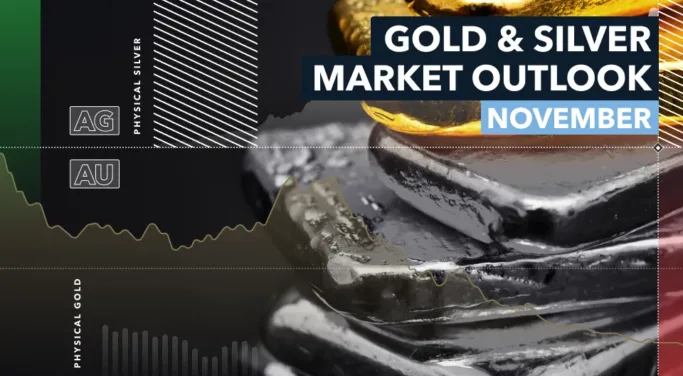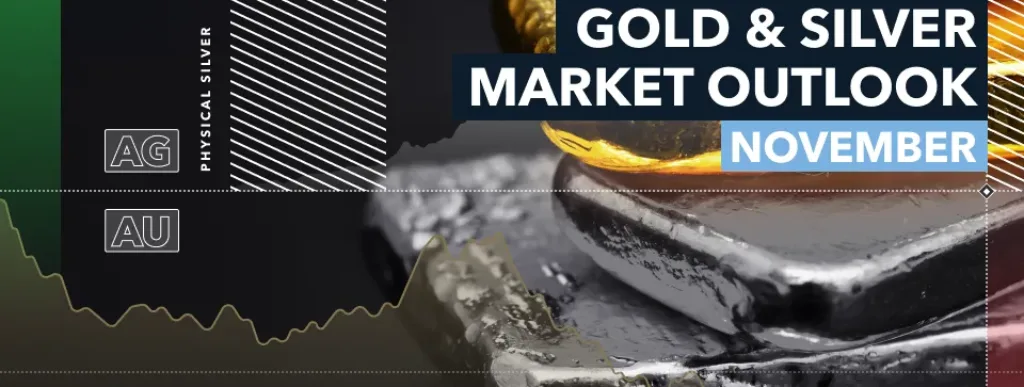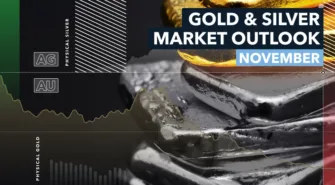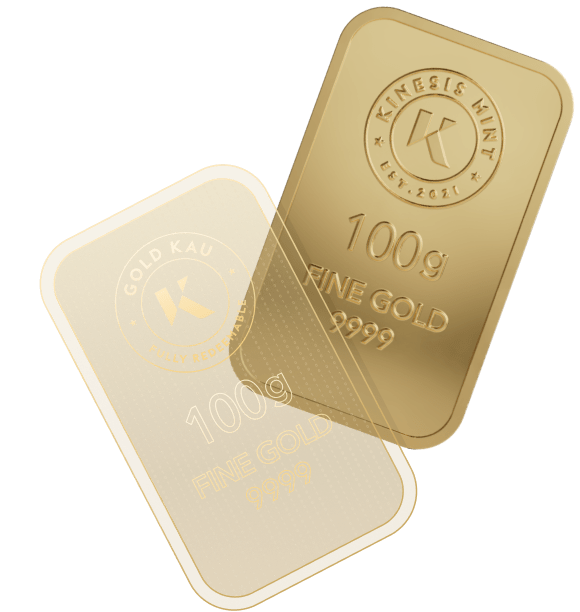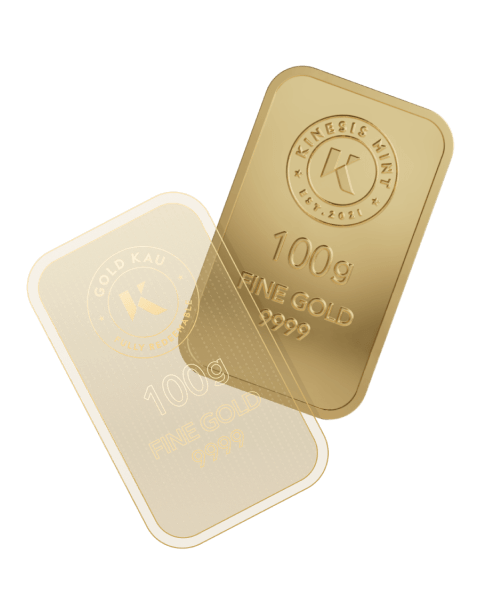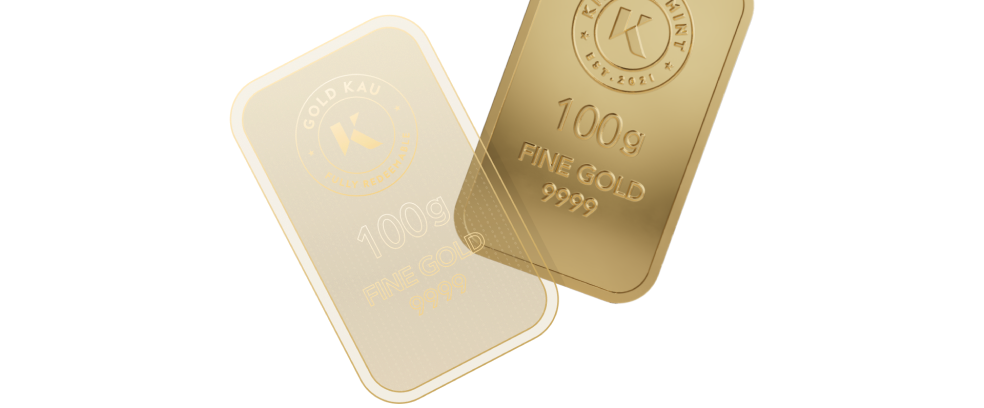Both gold and silver registered healthy gains in November, with gold advancing 3.2% to a seven-month high above $2040 per ounce and silver rising 9.7% through key technical levels to a three-month high at $25 per ounce.
Both precious metals ultimately benefited from a lower US interest rate environment, though there was some volatility over the course of the month. Markets are now more confident that rates have peaked and will decline in 1H 2024. A weaker dollar has further reinforced price appreciation.
Despite the positive price performance, there has been little sign of positive momentum in the physical holdings of either gold or silver within Exchange Traded Products (ETPs). In the case of silver, it is reasonable to ask whether we are approaching a ‘floor’ in levels of investment.
Incoming data continues to support a ‘soft landing’ for the global economy which is moderately supportive of precious metals pricing. While geopolitical risk hedging fell in November to the detriment of both gold and silver, but is likely to recover over the short to medium term on already identifiable triggers.
Easing Interest Rates Provides a Boost
US interest rates are fundamental drivers for both gold and silver prices. As non-yielding assets, both benefit from low-interest rates as this increases the opportunity cost of holding them over traditional cash deposits. This is, however, not the case with digitalised gold and silver products, such as Kinesis gold (KAU) and silver (KAG), which cost investors 0% storage fees and additionally offer a yield on holdings.
For gold, longer-term (bond) rates also appear to be a driver, particularly when adjusted for inflation (i.e., ‘real rates’). This is thought to be a function of gold’s long-established status as a store of long-term rates.
November presented as something of a roller-coaster for US rates, with precious with both gold and silver prices initially supported by a Fed rate decision and press conference that was widely misinterpreted as being dovish, which was subsequently reversed by Fed Chair Jerome Powell issuing very hawkish clarification. Ultimately, however, the weight of data in the latter half of November supporting the view that inflation remained on a firm downward track and that US rates have peaked allowed rate markets to rally.
At the time of writing, US 2-year yields had eased to 4.66%, from 5.10% at the start of the month, while 10-year yields had fallen to 4.28%, from 4.93%. Futures suggest that markets now are pricing in a c. 78% probability that US rates will be at lower levels by the Fed’s scheduled meeting in May 2024, against a c. 38% probability at the start of November. The next Fed rate decision on 13 December should yield further clues to the path forward.
The US Dollar Moves from Headwind to Tailwind
The dollar has been on the back foot for most of November, with weakness accelerating into the latter half of the month on faltering rate support and receding geopolitical risk. With the Dollar Index (DXY) ending the month over 3% down, this has directly supported the dollar prices of both gold and silver and boosted affordability for most non-dollar regions.
With the US dollar remaining a very crowded trade among financial speculators and the Fed leading the interest rate cycle, it is likely we will see a degree of policy rate convergence during the course of 2024. This should lead to a further weakening of the US dollar, not only lifting precious metal prices through FX translation but also supporting precious metal affordability in key consumer markets, such as India and China.
ETP Momentum Lacking, but scope for a Technical Recovery
Flows into listed physical gold Exchange Traded Products (ETPs) are often considered indicative of marginal retail investor activity. These were on a downward trend in the first half of November, driven by a lack of spot price momentum, market re-risking and a resurgence in dollar interest rates. However, this reversed later in the month as fears of further rate hikes receded, with holdings essentially unchanged month-on-month.
While it is far too early to say whether this represents a turning point for such physical gold holdings there is certainly scope for a technical recovery given solid fundamentals and stocks down c 8% from their year high in late May. On a more positive note, central banks’ appetite for additional bullion reserves appears unabated.
Conversely, physical silver ETPs continued to show outflows during November and holdings now stand c 23% below their year high in late April. It is notable that flows have continued to be quite weak in the face of decent fundamental prospects and a spot market rally of 20% since early October.
Geopolitical Risk Abates. But Triggers Remain
Silver, and especially Gold, have historically been viewed as ‘safe-haven’ assets and a partial hedge to geopolitical risk. Conversely, the recent abatement of conflict in the Middle East has probably acted as a brake on precious metals, as suggested by the price action of gold and silver over the October/November period.
However, despite this period of relative calm, it is sobering to consider what might now lie ahead. The situation in the Middle East is, as ever, far from resolved; Taiwan/China relations will be tested by the former’s presidential election in January; the conflict in Ukraine is likely to intensify once again by next spring and the US faces a highly partisan presidential election in less than twelve months’ time. The option value of gold and silver as a geopolitical risk hedge is set to remain.
A ‘Soft Landing’ for Growth is Moderately Supportive. Eye on OPEC+
Recent economic data has caused markets to become more confident of a ‘soft landing’ for global economic growth over the next year. Most economies have remained more resilient than expected in 2023 – with the notable exception of the Eurozone – while a moderate slowdown, but no recession is forecast for 2024 in most regions.
This backdrop is moderately supportive of both gold and silver as economic growth boosts the affordability of these precious metals. Silver in particular benefits from this trend, given that some 45%-50% of demand is generated from industrial applications that are tied to the economic cycle.
The recent difficulties that the OPEC-plus group of oil producers seem to be having in agreeing on quotas have seen spot crude prices tumble. If maintained, this creates unambiguous bullish price momentum for gold and silver as it supports both lower inflation and rates and higher economic growth.
Carlo is an external market analyst for Kinesis Money. With a credential background in Economic Finance and International Exchange (MA), Carlo’s critical analysis of gold and silver markets’ performance is frequently quoted by leading publications such as Forbes, Reuters, CNBC, and Nasdaq.
This publication is for informational purposes only and is not intended to be a solicitation, offering or recommendation of any security, commodity, derivative, investment management service or advisory service and is not commodity trading advice. This publication does not intend to provide investment, tax or legal advice on either a general or specific basis.
Read our Editorial Guidelines here.













